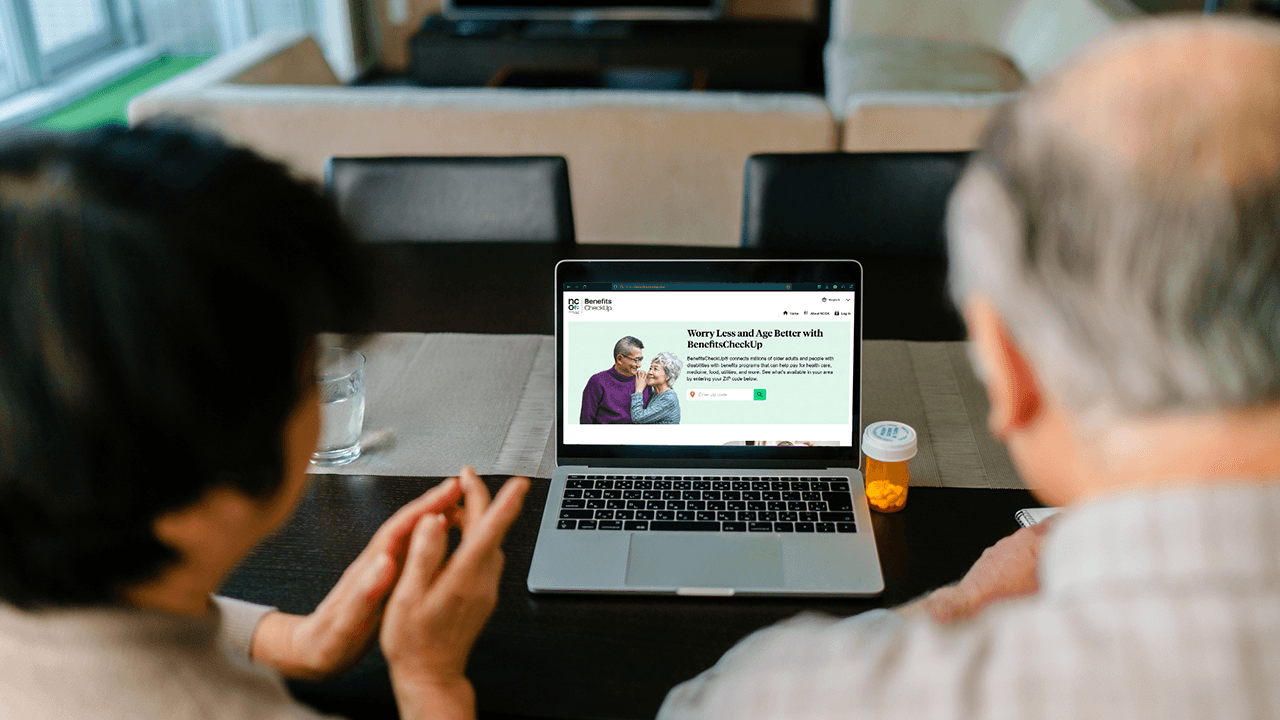
The Supplemental Nutrition Assistance Program (SNAP) is the largest domestic hunger safety net program. SNAP is especially important in helping low-income older adults to achieve food security. But many myths abound.
Setting the record straight with seven facts about seniors and SNAP
- Older adults’ participation in SNAP is staggeringly low. Nationally, about 4.8 million older adults (aged 60+) are enrolled in SNAP. Yet this figure represents less than half of the eligible population; approximately three out of five seniors who qualify to receive SNAP are missing out on benefits—an estimated 5 million people in all.1
- The average SNAP benefit for older adults is $188/month.2 While there is a pervasive myth that older adults who qualify for SNAP only receive $23/month in benefits, this is largely untrue. The $23 figure is the minimum monthly benefit a senior can receive—80% of SNAP participants age 60+ receive more than the minimum. Many older adults may be able to take advantage of deductions for other expenses that can increase their monthly SNAP allotment. According to the Center on Budget and Policy Priorities, the average monthly benefit per person in fiscal year 2024 will be $189 per month or $6.20 per day.3
- Many older adults who qualify for the excess medical expense deduction don’t use it. Seniors who spend more than $35 a month on out-of-pocket medical costs may be able to deduct that from their gross income when applying for SNAP, thus increasing their monthly benefit amount. Currently only 16% of older adults utilize the medical expense deduction, but it is estimated that many more SNAP-eligible older adults would qualify to use it.4 To learn more about the deduction, see our fact sheet SNAPshots: Maximizing the SNAP Medical Expense Deduction for Older Adults.
- Isolation is a key factor in the lives of many older adult SNAP participants. Roughly 85% of older adults who receive SNAP benefits live alone.3 More than half of these isolated seniors have little to no income—depending entirely on general assistance, Supplemental Security Income (SSI), or other benefits for their subsistence. For these individuals, the $1,416 in average annual SNAP benefits can mean the difference between having food and going without.
- SNAP is good for the local economy. SNAP benefits are spent at community grocery stores and markets, thereby infusing money into the local economy. An analysis of the fiscal stimulus measures from USDA’s Economic Research Service found that additional SNAP benefits created the best return on investment, with every $1 in additional SNAP benefits generating $1.79 in local economic activity. On a larger scale, it is estimated that an additional $1 billion in SNAP benefits would generate 8,900 full-time equivalent jobs.
- Access to SNAP is associated with reduced health care costs. NCOA’s previous research on senior debt found that many older adults with debt make trade-offs that are potentially dangerous to their health, such as skipping meals and cutting pills in half. Access to benefits that help pay for food and health care reduces food insecurity and increase medication adherence—but the effects may be even bigger than that. A study of 60,000 low-income Maryland seniors found that SNAP participants are 23% less likely to enter a nursing home and 4% less likely to be hospitalized in the year after receiving SNAP than non-participants.5 SNAP participation was also linked to lower overall health care expenditures and Medicaid/Medicare costs.
- You can get all the information needed to help older adults apply for SNAP in one place. NCOA's BenefitsCheckUp matches your unique needs to relevant benefit programs, like SNAP, current eligibility requirements, and application information using a simple online screening tool. All you have to do is enter your ZIP code to get started.
Sources
1. Food Research and Action Center. SNAP Participation Lags Among Eligible Seniors in Every State, Putting Them at Greater Risk of Hunger. March 22, 2019. Found on the internet at https://frac.org/news/snap-participation-lags-among-eligible-seniors-in-every-state-putting-them-at-greater-risk-of-hunger
2. USDA. Characteristics of Supplemental Nutrition Assistance Program Households: Fiscal Year 2023. April 2025. Found on the internet at https://fns-prod.azureedge.us/sites/default/files/resource-files/snap-FY23-Characteristics-Report.pdf
3. Center on Budget and Policy Priorities. A Quick Guide to SNAP Eligibility and Benefits. October 2023. Found on the internet at https://www.cbpp.org/research/food-assistance/a-quick-guide-to-snap-eligibility-and-benefits
4. Food Research and Action Center. Best Practices for Capturing Allowable Medical Expense Deductions for SNAP. May 2019. Found on the internet at https://frac.org/wp-content/uploads/best-practices-capturing-allowable-medical-expense-deductions-snap.pdf
5. Steven Carlson and Brynne Keith-Jennings. XNAP is Linked with Improved Nutritional Outcomes and Lower Health Care Costs. Center for Budget and Policy Priorities. Jan. 18, 2018. Found on the internet at https://www.cbpp.org/research/food-assistance/snap-is-linked-with-improved-nutritional-outcomes-and-lower-health-care




